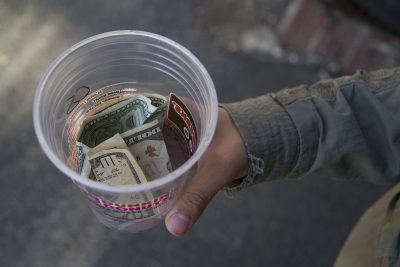State data shows the number of the youth and young adult homeless population has increased sharply in Massachusetts.

Compared to the previous academic year, the number increased by almost 3,000 in the 2017-2018 school year, according to data released recently by the National Center for Homeless Education.
However, this increase does not necessarily mean more youth are becoming homeless in the state. More accurate date collection could simply be discovering more students who were already homeless.
Jacob Hanson, Metro Boston liaison for the Massachusetts Department of Elementary and Secondary Education, said this increase can be attributed to two main reasons: increased outreach from schools — leading to more precise statistics — as well as rising costs of housing.
23,577 students enrolled in public schools in Massachusetts were found to be homeless in the 2017-2018 academic year, the NCHE data showed.
This change is significant, because the difference between the number of homeless YYA in school years 2016-2017 and 2015-2016 was less than 100. In both those years, the total number hovered just below 21,000.
Kelly Turley, associate director at the Massachusetts Coalition for the Homeless, said one challenge for many homeless youth is that they feel abandoned by adults and are less trusting of services.
“Resources are available,” Turley said, “but do not necessarily address all needs.”
Dorchester resident Norsiah Mansoor, 57, said she has grievances with the American culture of parents expecting their children to move out at 18 years old.
“If you have not established yourself at a young age, then you might end up homeless if you don’t have a job at 18,” Mansoor said. “Where would you go?”
Mansoor said she thinks this contributes to the problem of youth homelessness.
“For me, my children can stay with me as long as they’re in school, or they are not married,” Mansoor said. “Once you’re married, then you’re on your own. But when you’re not, you’re not established unless you’re doing well.”
Another resident, Michael Sheehan, 27, of Brookline said the cost of living in Boston is more expensive than in North Carolina, where he previously lived. He said many young adults are already spending heavy money on higher education, but must worry about how to finance housing as well.
“So they wind up working or going to school full-time but working full-time,” Sheehan said. “And you can barely make it working with a college workload and that affects the grades and it’s just, it’s almost pointless.”
Nestor Santiago, 20, of Kenmore said he thinks more outreach by colleges could help alleviate the problem.
“It’d be really nice if they could give back to their student community,” Santiago said, “and maybe offer some subsidized housing or even loans that they can pay off in the future.”
As of 2018, 50 percent of homeless youth and young adults in Boston were Black, and between 20 and 35 percent are Latino, according to data released by the City. Meanwhile, between 25 and 29 percent of young homeless individuals in Boston identified as part of the LGBTQ community.
Boston Mayor Marty Walsh had launched a plan late last year to commit the City to ending youth homelessness with help from a network of community partners.
Turley said the Boston Youth Action Board, composed of a group of young people who had previously experienced homelessness, supports this effort by Walsh.
“Youth Action Board is helping to guide implementation,” Turley said, “and to let others know that there are more resources to help them.”






















































































































